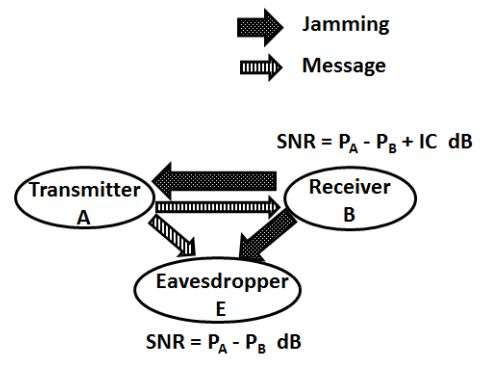August 16, 2013 report
Microsoft India team develop secure Peer-to-Peer acoustic NFC system

(Phys.org) —A team of researchers at Microsoft India has developed an alternative to standard NFC communications between hand-held devices—a software only system that makes use of the speaker and microphone already in use by phones and other devices. Called (Dhwani-"sound" in English) the new system can transmit small amounts of data without the need for any additional hardware.
Standard NFC communications, based on RFID, allow two devices to communicate with one another without having to access a network. Despite a lot of press coverage (and hardware to support it becoming standard in a lot of phones) NFC has failed to take off—for it to succeed other vendors, such as grocery stores, would need to add hardware to their existing equipment. To get around this problem, the engineers in India have done away with the need for additional hardware choosing instead to take advantage of the acoustic abilities inherent in virtually any smartphone (including the iPhone). It works on roughly the same principle as old-school modems, which means it uses beeps, squeaks, squawks and other noises to send and receive data.
Dhwani is slow by any measure with a data rate of just 2.4 Kbps. For that reason, no one is going to be using it to send pictures or video, instead, it's meant to send data such as that used for digital wallet transactions. The development team says it's more secure than RFID based NFC communications as well because it's based on a Jam-Secure technique—where it sends self-jamming noise along with self-cancelation to avoid eavesdropping—anyone else listening in would hear only chaotic noise.
To use the new system, two phone users download the software, run it, then place their phones together where the speaker for one is next to the microphone of the other (its range is approximately 10 centimeters). The developers claim that ambient noise won't pose a problem for the exchange, thus paving the way for its use in virtually any environment where people use their phones.
Of course for the system to work, other vendors must write apps for it to allow the two phones, or phone and other equipment to carry out proprietary transactions. Whether that will happen or not, is still unclear, but if it does, the new software could be a game-changer.
More information:
research.microsoft.com/apps/pu … fault.aspx?id=192134
Dhwani : Secure Peer-to-Peer Acoustic NFC, research.microsoft.com/pubs/19 … 4/Paper325Dhwani.pdf
© 2013 Phys.org



















